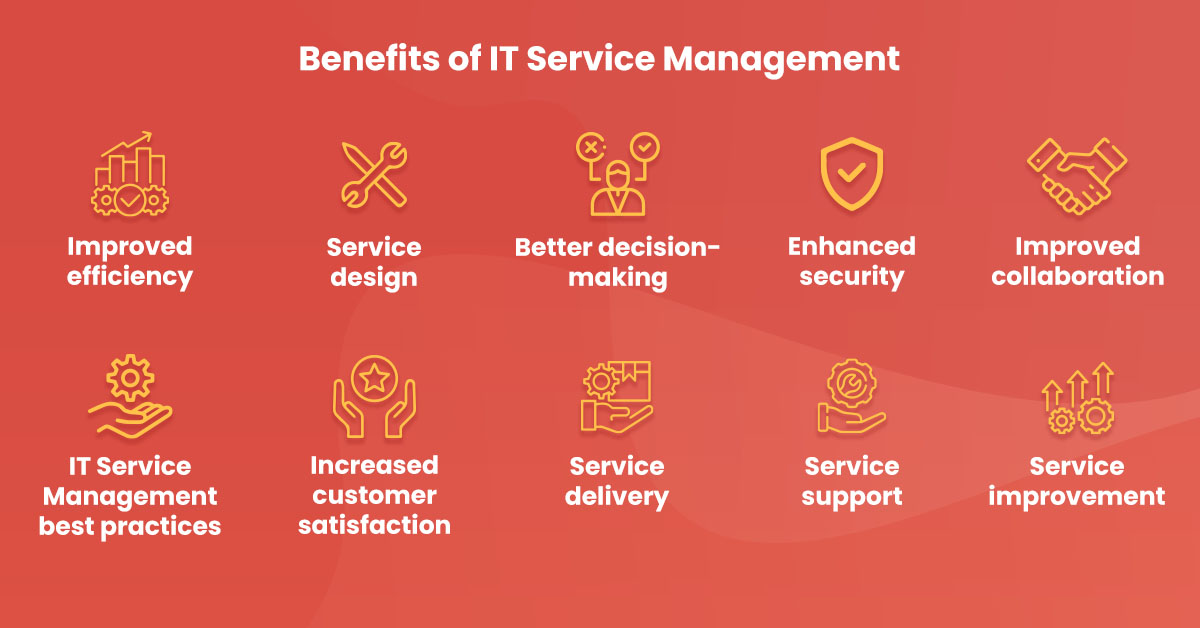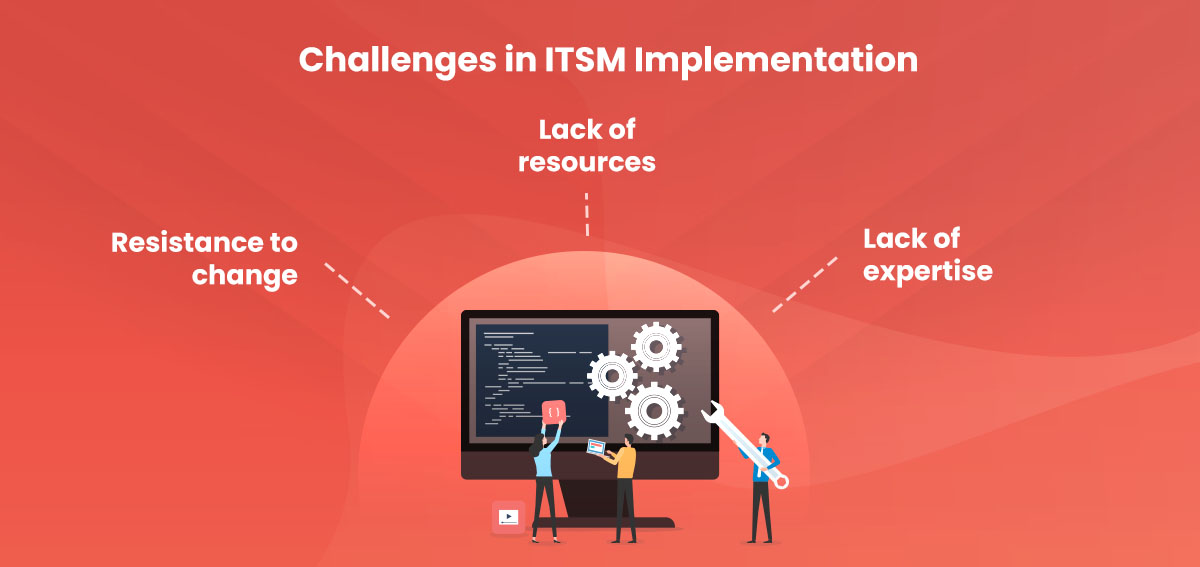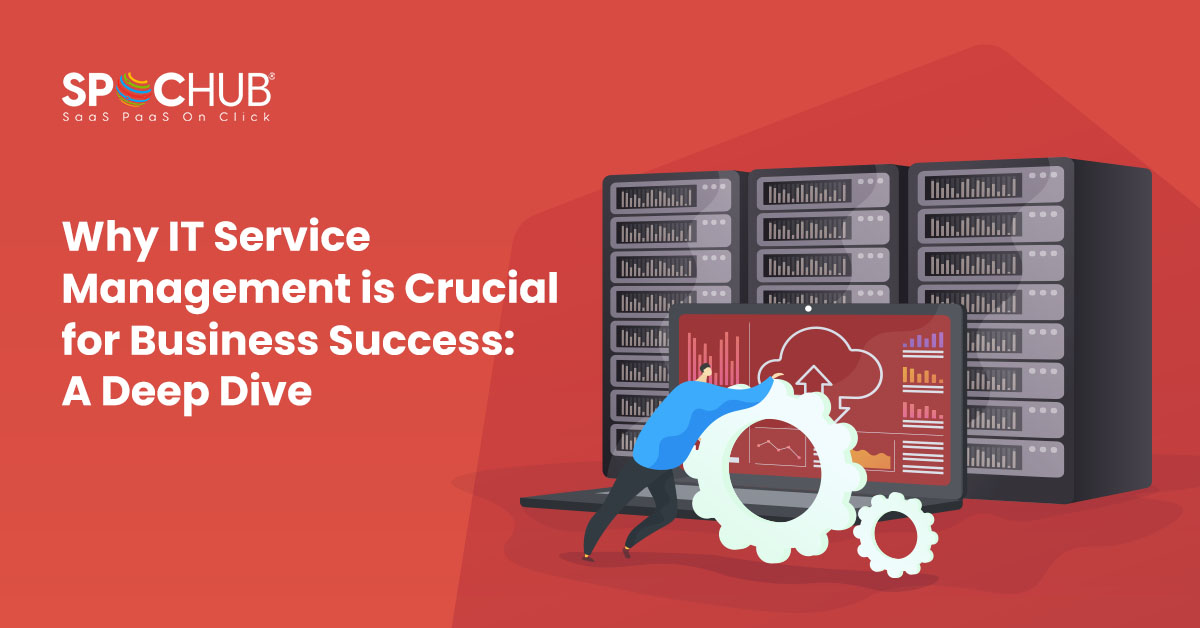In today’s digital world, businesses rely heavily on technology to operate efficiently. From managing customer databases to processing online transactions, technology has become an integral part of business operations. However, with the increasing reliance on technology, businesses face a new set of challenges, including managing and maintaining their IT infrastructure. This is where IT service management (ITSM) comes into play. ITSM is a set of practices that help businesses manage their IT infrastructure and services. It involves processes, tools, and policies that ensure the delivery of high-quality IT services to customers. But why is ITSM so crucial for business success? In this deep dive, we’ll explore the benefits of ITSM, how it works, and why it’s essential for businesses of all sizes.
What is IT Service Management?
IT Service Management (ITSM) is a set of practices that help businesses manage their IT infrastructure and services. ITSM involves the use of processes, tools, and policies to ensure the delivery of high-quality IT services to customers. It is a framework that enables businesses to manage their IT assets, processes, and people effectively. ITSM covers a broad range of activities, including service design, service delivery, service support, and service improvement. The goal of ITSM is to ensure that businesses can deliver high-quality services to their customers efficiently.
ITSM is based on a set of best practices that have been developed over the years. These best practices are designed to help businesses manage their IT infrastructure and services effectively. ITSM best practices include ITIL (Information Technology Infrastructure Library), COBIT (Control Objectives for Information and Related Technology), and ISO/IEC 20000 (Information Technology – Service Management). These best practices are designed to ensure that businesses can deliver high-quality IT services to their customers efficiently.
The importance of IT Service Management for business success
IT service management is crucial for business success for several reasons. First, ITSM enables businesses to streamline their IT processes and ultimately improve their overall performance. By implementing ITSM practices, businesses can reduce downtime, improve response times, and increase customer satisfaction. ITSM also helps businesses to manage their IT assets effectively, ensuring that they have the right hardware and software to meet their business needs.
Furthermore, ITSM enables businesses to manage their IT services effectively. This includes managing incidents, problems, changes, and service requests. By managing these processes effectively, businesses can reduce the impact of incidents and problems on their operations. ITSM also helps businesses to ensure that they are delivering high-quality services to their customers.
In today’s digital world, where businesses rely heavily on technology, ITSM is essential for ensuring business continuity. ITSM helps businesses to manage their IT infrastructure and services effectively, ensuring that they can continue to deliver high-quality services to their customers.
Benefits of IT Service Management
Implementing IT service management practices can provide several benefits to businesses. Some of the benefits of ITSM include:
1. Improved efficiency
ITSM enables businesses to streamline their IT processes, reducing downtime and improving response times. By improving efficiency, businesses can save time and money, enabling them to focus on other areas of their business.
2. Increased customer satisfaction
ITSM helps businesses to deliver high-quality services to their customers, improving customer satisfaction. By providing excellent customer service, businesses can build strong relationships with their customers, leading to increased loyalty.
3. Better decision-making
ITSM provides businesses with the information they need to make informed decisions. By tracking and analyzing data, businesses can identify areas for improvement and make data-driven decisions.
4. Enhanced security
ITSM helps businesses to manage their IT security effectively, reducing the risk of cyber-attacks and data breaches. By implementing ITSM practices, businesses can ensure that their IT infrastructure is secure and protected.
5. Improved collaboration
ITSM promotes collaboration between different teams within an organization, enabling them to work together more effectively. By promoting collaboration, businesses can improve communication and reduce the risk of miscommunication.
6. IT Service Management best practices
ITSM best practices are a set of guidelines that businesses can follow to ensure that they are managing their IT infrastructure and services effectively. Some of the best ITSM practices include:
7. Service design
Service design involves designing IT services that meet the business needs of an organization. This includes defining service requirements, identifying service components, and establishing service level agreements (SLAs).
8. Service delivery
Service delivery involves ensuring that IT services are delivered to customers efficiently and effectively. This includes managing incidents, problems, changes, and service requests.
9. Service support
Service support involves providing technical support to customers, ensuring that they have access to the help they need when they need it. This includes providing support for hardware and software issues, as well as providing training and documentation.
10. Service improvement
Service improvement involves continually improving IT services to meet the changing needs of an organization. This includes identifying areas for improvement and implementing changes to improve service quality.

ITSM frameworks – ITIL and COBIT
ITIL and COBIT are two popular ITSM frameworks that businesses can use to manage their IT infrastructure and services. ITIL is a set of best practices for IT service management that was developed by the UK government in the 1980s. ITIL is designed to help businesses manage their IT services effectively, ensuring that they are delivering high-quality services to their customers.
COBIT is a framework that was developed by ISACA (Information Systems Audit and Control Association) to provide businesses with a comprehensive set of guidelines for IT governance. COBIT is designed to help businesses manage their IT infrastructure and services effectively, ensuring that they are complying with industry regulations and best practices.
ITSM implementation process
Implementing ITSM practices can be a complex process that requires careful planning and execution. The ITSM implementation process typically involves the following steps:
- Assessing the current state of ITSM – Before implementing ITSM practices, businesses need to assess their current state of ITSM. This involves identifying areas for improvement and establishing a baseline for measuring progress.
- Defining ITSM goals – Businesses need to define their ITSM goals, including what they want to achieve and how they plan to achieve it. This involves identifying key performance indicators (KPIs) and establishing a timeline for achieving goals.
- Developing an ITSM plan – Once goals have been defined, businesses need to develop an ITSM plan. This involves identifying the processes, tools, and policies that will be used to achieve ITSM goals.
- Implementing ITSM practices – The next step is to implement ITSM practices. This involves training staff, updating policies and procedures, and implementing new tools and technologies.
- Measuring and monitoring progress – Finally, businesses need to measure and monitor progress. This involves tracking KPIs and making adjustments as needed to ensure that ITSM goals are being met.
ITSM tools and software
There are several ITSM tools and software solutions available that businesses can use to manage their IT infrastructure and services. Some of the most popular ITSM software solutions include:
- SapphireIMS Service Desk– It is a complete IT Service Management Suite that is certified with ITIL v2011 and designed for enterprise-level usage. It facilitates the management of service operations and helps ensure that service level goals are met, guaranteeing customers receive the intended services. With SapphireIMS Service Desk, businesses can enhance their customer service performance, perception, and satisfaction.
- Fresh service – Freshservice is a cloud-based ITSM software solution that provides businesses with a comprehensive set of tools for managing their IT infrastructure and services. Freshservice includes features for managing incidents, problems, changes, and service requests, as well as tools for IT asset management and service level management.
The role of ITSM in digital transformation
Digital transformation is the process of using digital technologies to transform business operations and processes. As businesses increasingly rely on technology to operate, digital transformation has become essential for ensuring business success. ITSM plays a crucial role in digital transformation by enabling businesses to manage their IT infrastructure and services effectively.
By implementing ITSM practices, businesses can streamline their IT processes, reduce downtime, and improve response times. This enables businesses to operate more efficiently and effectively, improving their overall performance. ITSM also helps businesses to manage their IT security effectively, reducing the risk of cyber-attacks and data breaches.
Challenges in ITSM implementation

Implementing ITSM practices can be a complex process that requires careful planning and execution. Some of the challenges that businesses may face when implementing ITSM practices include:
a. Resistance to change
Implementing ITSM practices often involves changes to policies, procedures, and processes. This can be challenging for staff who may be resistant to change.
b. Lack of resources
Implementing ITSM practices requires resources, including staff, time, and money. Businesses that do not have the necessary resources may struggle to implement ITSM practices effectively.
c. Lack of expertise
ITSM is a complex field that requires expertise and knowledge. Businesses that do not have the necessary expertise may struggle to implement ITSM practices effectively.
Conclusion: ITSM is crucial for business success
In today’s digital world, where businesses rely heavily on technology, ITSM is essential for ensuring business continuity and success. ITSM enables businesses to manage their IT infrastructure and services effectively, ensuring that they can continue to deliver high-quality services to their customers. By implementing ITSM practices, businesses can streamline their IT processes, reduce downtime, and improve response times. This enables businesses to operate more efficiently and effectively, improving their overall performance. With the right tools, software, and expertise, businesses can successfully implement ITSM practices and reap the benefits of improved efficiency, increased customer satisfaction, and better decision-making.



